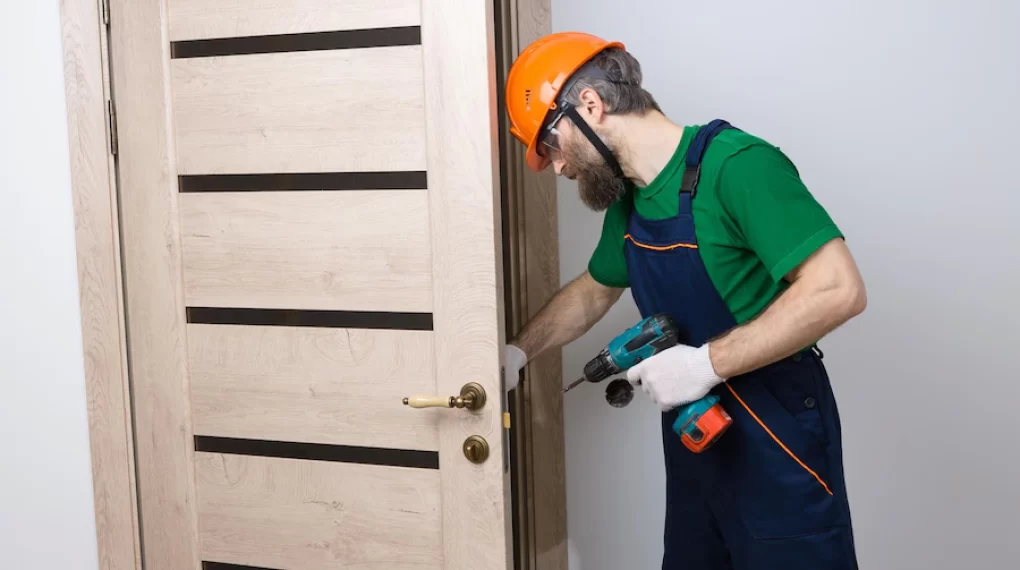
In an increasingly uncertain world, the need for security and protection is paramount. One area often overlooked when it comes to safety is the entrance. The front door of your home serves as the primary access point and, on that account, needs special attention.
This is where a security door comes into play. A security door not only serves as a deterrent to potential burglars but also enhances the overall security and value of the property.
Why Do You Need A Security Door?
A security door serves as an additional layer of protection, significantly reducing the risk of unauthorized access and providing peace of mind. It is specially designed with reinforced materials, advanced locking systems, and other security features.
Unlike traditional doors, security doors like CrimSafe Security Doors are specifically engineered to withstand harsh weather conditions and external threats. Other than that, this also provides an effective mechanism against break-ins and contributes to energy efficiency.
How To Install A Security Door

Before you begin the installation process, remember to ass your specific needs first. Consider factors such as level of security, style, and any features you want your security door to have. This assessment will help you choose your property’s most suitable security door.
To install a security door, you will need the following tools and materials:
- Tape measure
- Screwdriver
- Drill
- Screws
- Latch
- Hinges
- Level
- Pencil
- Safety Goggles
- Gloves
If you are done with the assessment and preparation of tools, you can now move to the next step, which is installing your security door. Here’s a step-by-step guide on how to install a security door.
1. Measure The Doorway
Accurate measurements are important to make sure that your security door fits perfectly. Using a tape measure, measure the width and height of the doorway. It’s important to measure both the frame and the opening to determine the correct door size.
In addition to that, note down any irregularities in the doorway, such as uneven floors or walls, because these may require additional adjustments during installation.
2. Choose The Right Security Door
With many security door options, picking a security door should be well-planned. Research different manufacturers and read reviews to ensure you choose a high-quality security door. Look for a door made of durable materials such as steel or reinforced aluminum. Consider features such as lock mechanisms, hinges, and other security features.
3. Prepare THE Door Frame
Before installing the security door, you need to prepare the door frame. Remove the existing and any hardware attached to it. Inspect the frame for any damages or rot and repair or replace it as necessary. Ensure the frame is clean and level before proceeding with the installation.
4. Install The Security Door
Now it’s time to install the security door. Follow the manufacturer’s instructions carefully, as installation methods may vary.
Attach The Hinges
Begin by attaching the hinges to the security door. Place the door on a stable surface and align the hinges with the pre-existing drilled holes. Secure the hinges using screws and a screwdriver. Ensure the hinges are properly aligned and allow the door to swing freely.
Position The Security Door
Place the security door in the door frame, ensuring it fits snugly. Use a level to check that the door is plumb and level. Adjust if needed for a perfect fit.
Secure The Door Frame
With the security door in place, it’s time to secure the door frame. Mark the locations where you will need to drill plot holes for the screws. Put on safety goggles and gloves before proceeding.
Drill Pilot Holes And Install Screws
Using a drill with an appropriate drill bit, carefully drill pilot holes into the door frame at the marked locations. These pilot holes will guide the screws when securing the door frame. Once the pilot holes are drilled, attach the screws using a screwdriver or a drill.
Install The Latch
Next, it’s time to install the latch on the security door. Measure and mark the appropriate location for the latch on the door frame. Use a chisel to create a recess for the latch plate. Secure the latch plate in place using screws.
5. Test The Door’s Functionality
Once the security door is installed, testing its functionality is essential. To ensure it functions smoothly, open and shut the door a few times. Check the alignment of the door and make any necessary adjustments. Test the lock mechanism to check if it functions properly.
6. Add Additional Security Features
To further enhance the security of your home, consider adding additional features to your security door. These can include security screens, deadbolt locks, or a peephole. Consult with a security professional to determine the best options based on your specific needs.
7. Maintain Your Security Door
Regular maintenance will keep your door in its best condition. Clean the door regularly using mild detergent and water. Inspect the door for any signs of wear or damage, such as loose screws or rust, and address them promptly. Lubricate the hinges and lock mechanisms as recommended by the manufacturer.
The Key To Safety
Safety and security are not the ones to compromise with, especially in your home and for your family. Taking extra security measures will benefit you in the long run and provide you with well-deserved peace of mind. Installation of a security door may be DIY-ed, or you can call for a professional’s help to install it for you. Either way, it’s one step to protecting your family and property.






